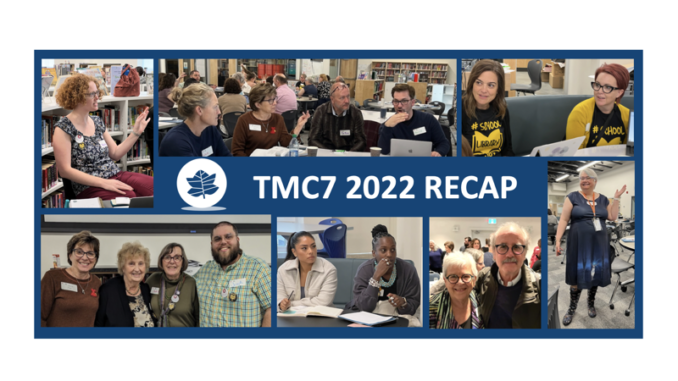
By Lila Armstrong and Marc Crompton
I think I might have figured out the magic of the Treasure Mountain Symposium. And it’s not the “4 million pounds of silver going into your brain,” as Dr. Loertscher joked. Although I’m a relative newbie to TMC (having only attended twice), there is something so startlingly different about how it feels to be there compared to other conferences.
The entire day is an interactive lesson, a classroom setup that would be amazing for a student, but which is equally amazing as an educator participant.
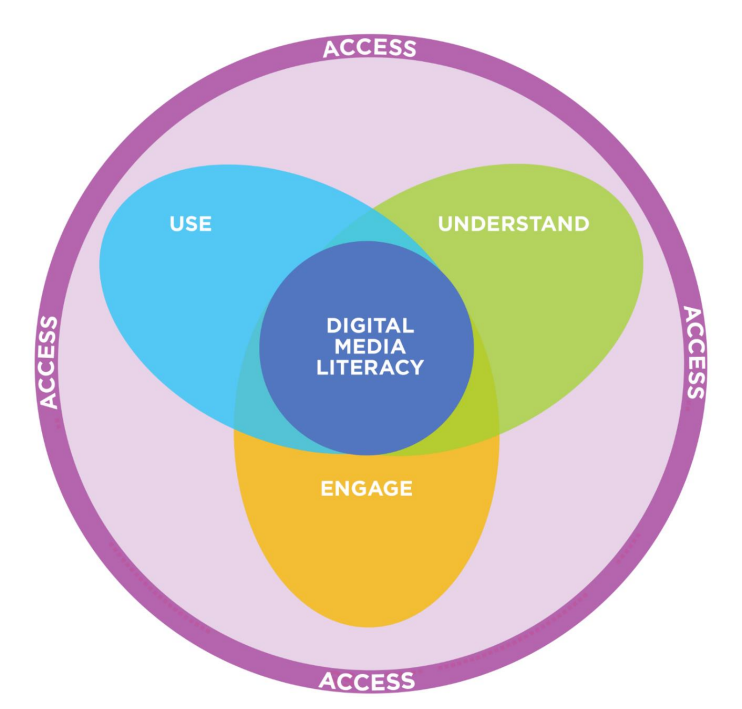
We started the day with a virtual presentation from Matthew Johnson, Director of Education at MediaSmarts. He explained the importance of a Canadian Digital Media Literacy Framework and elaborated on the research that MediaSmarts has been undertaking to make this a reality. Matthew underscored the importance of the role of teacher librarians in bringing digital media literacy to schools and students and explained how access is still a critical aspect.
Anita Brooks Kirkland then prompted us to engage in a collaborative thinking activity about the redefined terms of access, use, understand and engage. We worked at our table groups to add to a real-time collaborative document. The google doc was displayed for us to see what a team of minds can accomplish in just a few minutes – focused on learning, and with an inviting prompt: How Can the LLC Lead The Way?

And this is how the day continued to run: learning followed by active and collaborative thinking.
Next up were Alanna and Tim King, who shared how using Trello, a project management tool, made it possible for students to learn critical self-management skills, but also created a wider network of mentors within their classes. In their experience with this software and learning model, students often self-organized into groups to work, based on their needs at the time. According to Tim, by having access to their classmates’ projects, the students actually began to raise the bar through connection, interest and engagement. We were then all invited into Trello to have a few minutes in the sandbox! Once again, we were collaboratively working with the material.
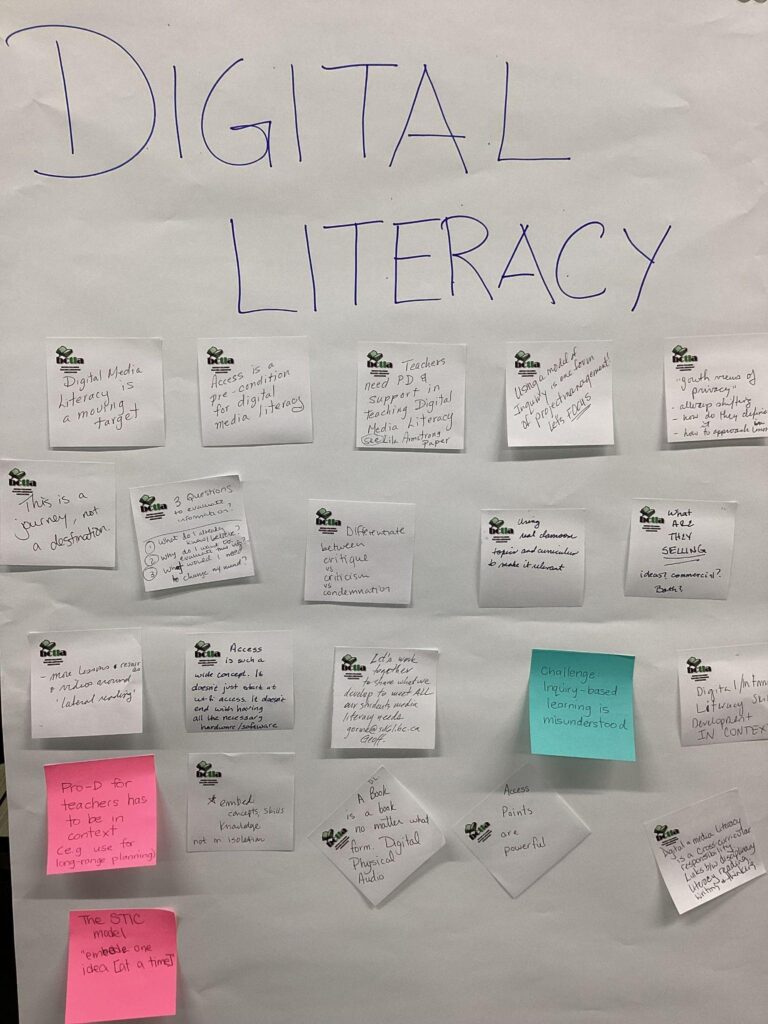
The next part of our day-long lesson came from Carol Koechlin, who introduced 5 Big Idea posters up around the learning commons. Each poster corresponded to the sub-themes of the symposium: diversity awareness, digital literacy, virtual LLC, community outreach and wellness. Carol asked us to post up ideas that were new to us, throughout the day, as we attended table talks, and listened to the speakers. The posters created a space for us to hang onto our learning and to read the big ideas that came out of other table talks. These posters were not just hung without purpose; they would be used later in Carol’s closing activity. Every activity in TMC has purpose and is designed as authentic learning.
When it was time for the table talks to begin, both morning and afternoon presenters had 30 seconds to pitch their paper, supported by a google slide highlighting main themes. Sounds like TL school, eh? Table talks were 20 minutes each, most of that time being spent on discussions, sharing experiences, and wonders about how to move our own practices, learning commons and thinking forward. Often, during conference presentations, there is time at the end for Q&A. The main difference at TMC is that presenter content is released ahead of time, and participants are expected to have read, watched, or interacted with it prior to attending a table talk. This completely changes the lens and provides opportunities for everyone to dig in together.
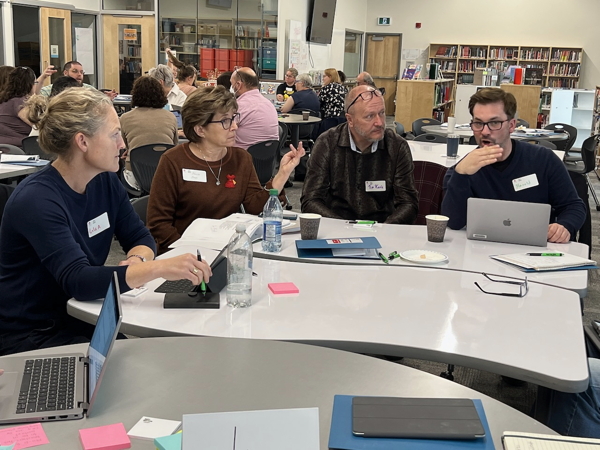
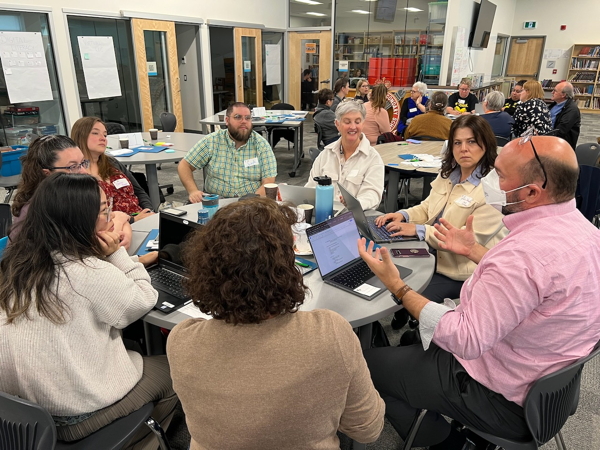
We wrapped up the morning with a session led by Dr. David Loertscher, who showed us the work that was being done in the Alive Library. He asked us to take a tour and to think about what special contribution of our own we might showcase. Canadian content examples will soon be coming to the Alive Library. He also shared a page of excellent links to keep us engaged in The Big Think. See: Dr. David Loertscher’s TMC7 Bibliography.
But life in the library isn’t all roses, as Sheri Kinney and Dr. Dianne Oberg highlighted in their session on Book Challenges. As Sheri walked us through her own recent experience with a book challenge, with humour and jokes, Dianne encouraged us to participate in a nationwide book challenge database. Even Richard Beaudry jumped up from the audience to add that even if book challenges fail, knowing the details of the challenge is useful to others who might be in similar situations.
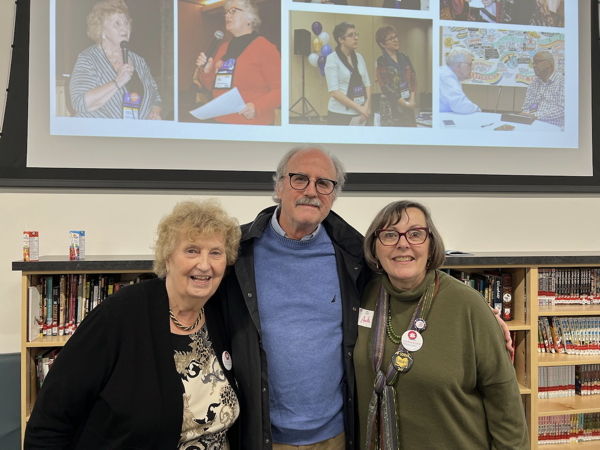
below scenes from TMCs past.
So the thread that is woven throughout the day follows us home. We leave thinking not only about how to do better, do more, learn more, and collaborate more, but how we can encourage our own students to be more engaged through curriculum design, as showcased by the CSL co-chairs, Carol and Anita. The frantic cerebral energy continues long after the day winds down, but I will leave the goodbyes to Marc Crompton, co-blogger of the symposium.
Final Thoughts
There hasn’t been a single Treasure Mountain that I’ve been to that hasn’t ended in disappointment. But as Dr Suess has famously said, “don’t cry that it’s over, be happy that it happened.” We’ve covered so much territory in less than 24 hours. Our retreat is ending with a Big Think. A time to collect our thinking and ask ourselves, So What? and Now What? Why do the things we’ve discussed matter, and what are we going to do with this information?
We’re reflecting on our thinking through the lens of the CSL Leading Learning Standards. How do the big ideas present themselves in the context of the standards? How might the standards need to be finessed to reflect the current thinking? What’s missing? Ultimately, how can we as school librarians be yet better?
It is this kind of thinking and the drive to serve our communities better that drives us as teacher librarians and makes me keep coming back to Treasure Mountain Research Retreats. Thanks to Anita, Carol, Joseph, David, and every single person that I’ve had the pleasure of talking to. You have made me a better teacher librarian and a better person. Until next time!
Find the TMC7 blog here.
Find the TMC7 papers here.
Reference
Brisson-Boivin, K. & McAleese, S. (2022). From Access to Engagement: A Digital Media Literacy Strategy for Canada. MediaSmarts. Ottawa.
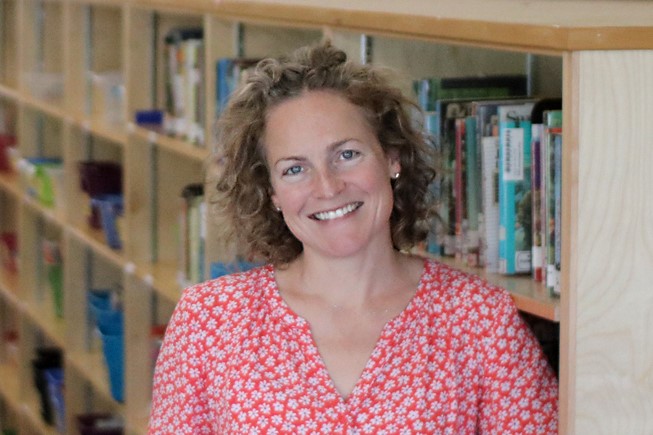
Lila Armstrong is a former French Immersion elementary teacher librarian, who has recently moved into a high school TL position. Lila works in SD71, Comox Valley Schools, on Vancouver Island, B.C. Her professional interests include professional development structures and optimizing educational technology. Supporting literacy everyday is her passion. She has a hobby farm on which she and her family grow asparagus, raise animals, and she is an amateur beekeeper – currently running 7 hives.
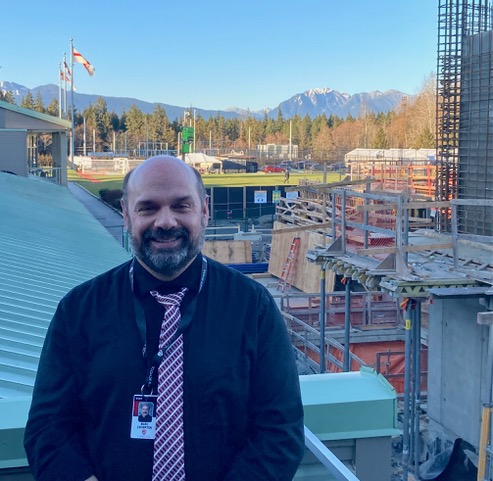
Marc Crompton is a 30-year veteran educator with more than a third of that time spent working in libraries. His degrees are in music performance, education and he holds an MLIS from San Jose State University. He’s been lucky enough to work closely with David Loertscher and, with him, has co-authored Collection Development Using the Collection Mapping Technique. He is excited about the role of the Makerspace in the Learning Commons environment and works extensively with his Maker Club and a STEM program as well as heading the Sr Learning Commons at St George’s School in Vancouver.